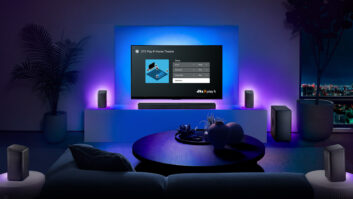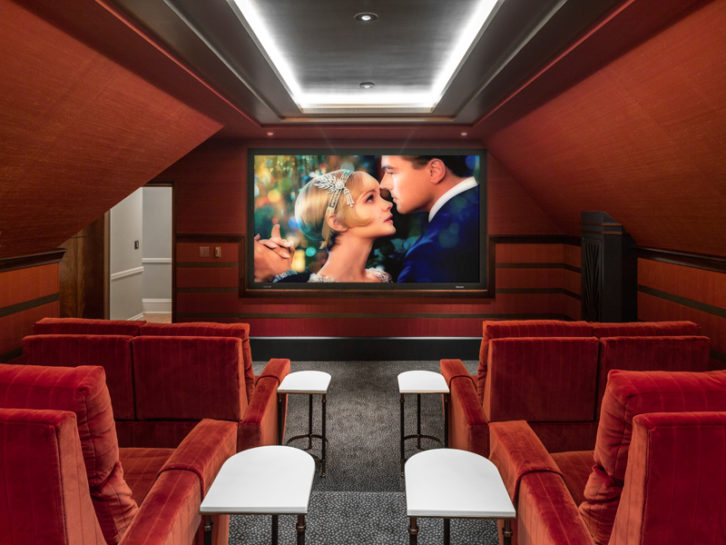
How do successful retailers convert an everyday TV owner into a customer for a full big screen, multi-speaker home theater system? Hint: Only one of the top three home theater sales pitches has anything to do with technology, picture, or sound quality.
Quarantining for Covid exacerbated an already accelerating trend toward home cocooning, already fueled by the increasing cost of going to the theater and the shrinking cost of a big screen TV. According to Technavio, the home theater market is forecasted to grow by $7.4 billion between now and 2027, an 8.51% CAGR.
But when we talk about home theater, what exactly are we talking about?
Everyone agrees that a home theater combines a big screen with a multi-channel surround sound system – definitely not just a soundbar – and maybe/hopefully a dedicated room with theater seating (with cup holders, of course), acoustic paneling, lighting control, carpeting, and all the theater accouterments. Or, as Jeff Galea, CEO at Boca Tech in Boca Raton, FL, colorfully puts it, “think of home theater as if you’re going to your local movie plex, but you want a ‘Honey, I Shrunk the Kids’ version of that in your house.”
Obviously, there is a wide variance of customer types, customer desires, available rooms or space in a home, and customer budgets ranging from five to six figures. We spoke to a plethora of home theater retailers and came up with three selling tips to appeal to folks who right now only own a big screen TV.
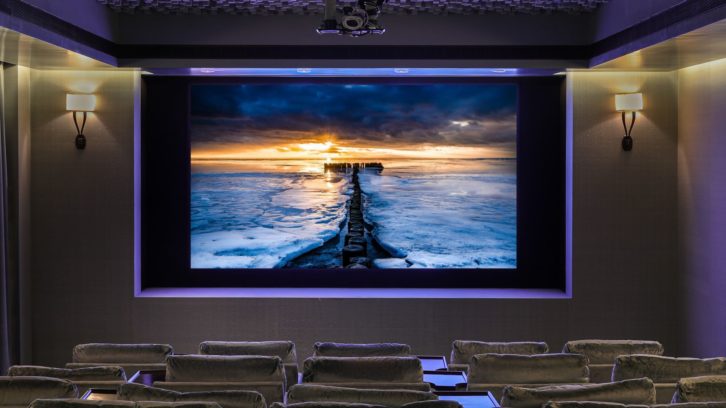
Tip 1: Demo, Demo, Demo
One constant refrain we heard was the importance of a home theater demo room – or several.
“It’s all about the demo. Once they see it, once they feel it… that’s it,” insists John Parry, the sales & system designer in Philadelphia-based World Wide Stereo’s Montgomeryville showroom. “[It’s a] big investment, but worth every penny as an aid to hone in on the right solution for a client.”
With a demo, “it’s much easier for a salesperson to walk a client into a $50-$75k theater – or more – and then walk the client into their budget than it is to talk up from a soundbar,” opines Christopher Emas, VP of brick & mortar sales for Denver, CO-based ListenUp.
Emas was one of many retailers who explained they not only didn’t have to pony up the entire cost for an effective home theater demo room, and what they did need to spend was well worth the investment. “Many vendors have great vendor demo programs that bring down the ROI,” notes Greg Porthan, the custom audio manager at Chicago-based Abt Appliance & Electronics.
Boca Tech has installed several demo “vignettes” in its showroom to reflect different price/sophistication levels of home theater systems, for instance. Regardless of the type of vignette, Galea has found one demo particularly effective.
“We let them listen for a little while, and then I go turn the sub off, while it’s still playing,” Galea explains. “All of a sudden, the bottom falls out. The husband and wife look at each other, and one of them says, ‘See? Right?!'”
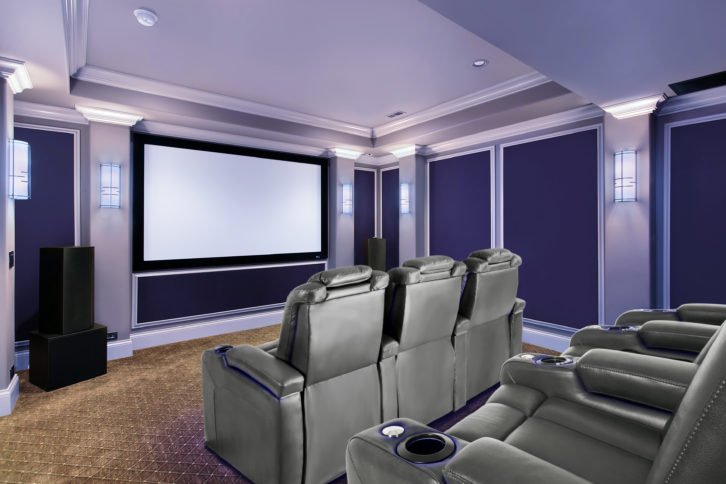
Tip 2: Don’t Hard Sell
Any customer who experiences a great home theater demo desires one. But how do you move the customer from desire to order?
One strategy employed by Just One Touch, the home theater side of LA’s Video Audio Center (VAC), is to provide a free home assessment, to send an expert to scope out a customer’s home before even attempting to suggest a system or budget with them. Joseph Akhtarzad, CEO of Just One Touch and co-founder of VAC, reports that seven of 10 such free home assessments resulted in sales.
Akhtarzad advises avoiding down-in-the-weeds technology talk. “They don’t know what projector they want, they don’t ask what speaker,” Akhtarzad says. “They want to be able to speak or touch, press one button, to open the curtain, get the projector to come down or, if it’s stationary, to start working, and increase the sound. They just want it to work.”
One thing that Galea stresses is to avoid the hard sell. “If you have to talk somebody into it, if they didn’t arrive at that solution on their own, then you’re leaving yourself wide open for them regretting it the minute they leave or the minute they give you a check, and then they’ll be a very difficult customer. It’s just not a good position to start from.”
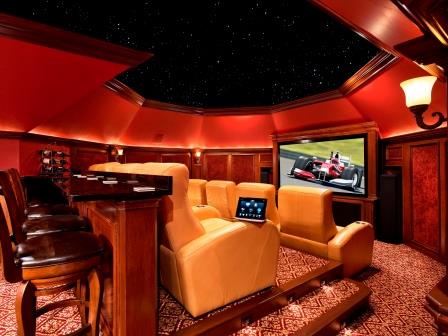 Tip 3: It’s an Investment
Tip 3: It’s an Investment
Possibly the strongest home theater selling point has nothing to do with A/V experience or price but with making an investment in both your home and your family.
“If any time you want to sell your house, [a home theater] is a better option for the buyer,” notes Just One Touch’s Akhtarzad. “Would they like to buy a home with a home theater rather than not having a full home theater?” If your customer is building a new home rather than retrofitting, Akhtarzad says “we sell them the idea of how important it is to have the home theater in a brand-new home to differentiate your house for the rest of their homes in the block.”
A far more immediate benefit of an investment in a home theater is the value it brings to your family. “One of the most powerful messages that pique a client’s interest for a home theater is [to] create a space that will make your kids want to hang out at home,” states WWS’ Parry.
A supreme home theater could turn your abode into your neighborhood’s premier gathering place. “You can keep your eyes on your kids,” echoes Akhtarzad. “You can see your kids’ friends, who they are, and your kids will stay with you more than going out.”
See also: Screen Innovations Debuts Solo 3 Line Of Indoor And Outdoor Projection Screens












